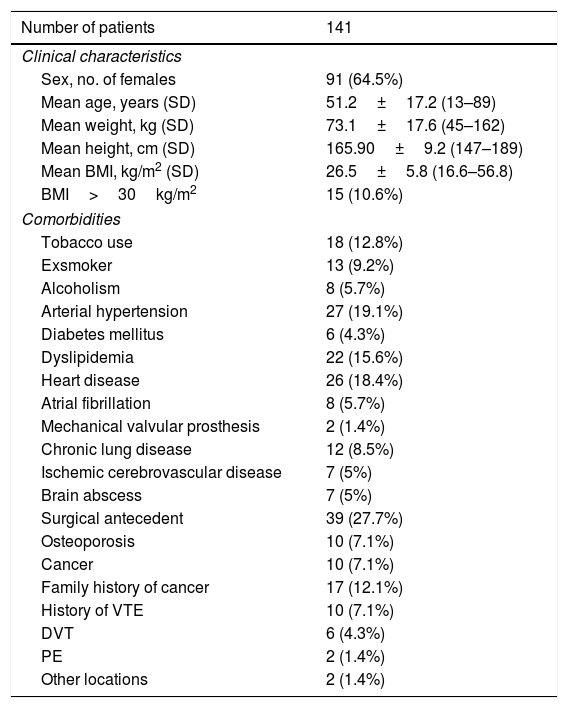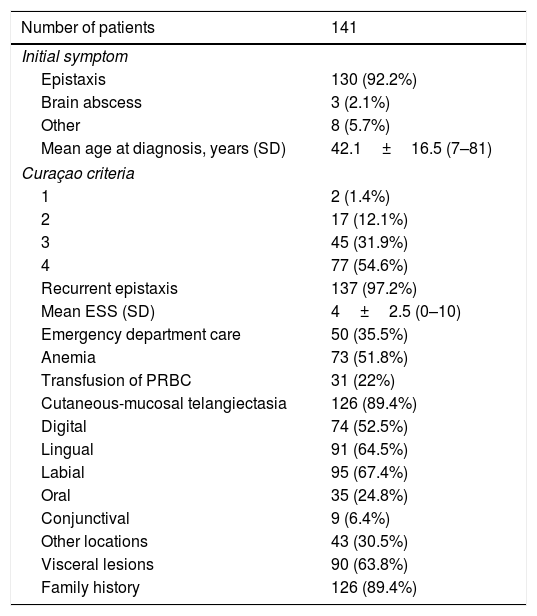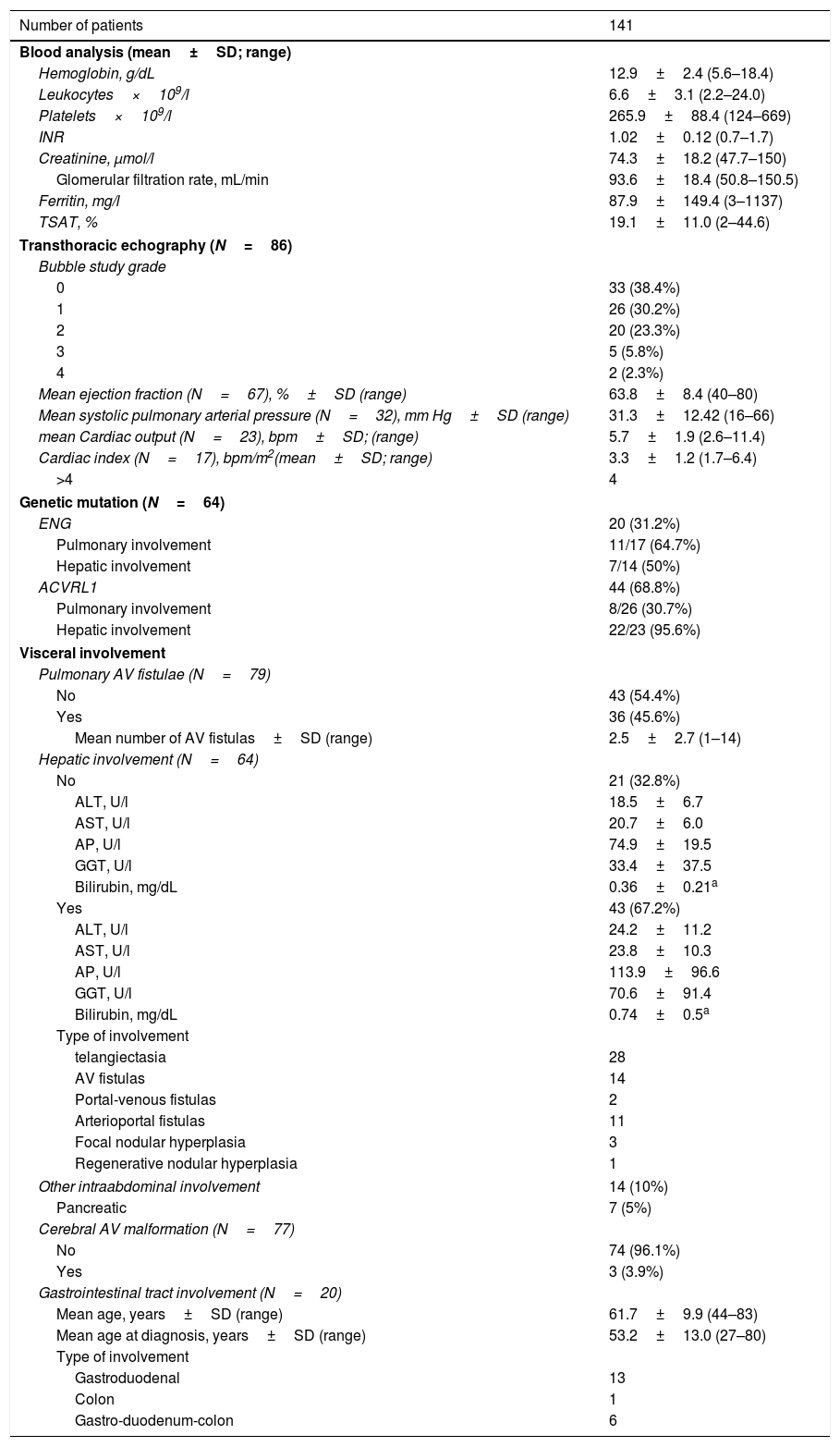Hereditary hemorrhagic telangiectasia (HHT) is a rare disease with autosomal dominant inheritance that causes systemic vascular affectation.
Material and methodAfter development a multicentric Spanish national registry, called RiHHTa, main clinical manifestations and diagnostic procedures of the first patients introduced are described.
Results141 patients were included, of which 91 (64.5%) were women. The mean age at diagnosis was 42 years. Mutations in the ACVRL1 gene predominated over the ENG gene. The initial symptom was recurrent epistaxis in 130 (92.2%) patients and in three (2.1%), brain abscess. Pulmonary arteriovenous (AV) fistula were detected in 36 (45%) of the 79 patients who underwent thoracic CT angiography. The contrast echocardiography detected very few bubbles (grade I) or none, in 36 (45%) of these 79 affected patients. In 43 (67.2%) of the 64 patients with an abdominal CT angiography, hepatic vascular malformations were detected, mostly telangiectasias, AV and arterio-portal fistula, and extrahepatic in 14 (10%) subjects. More than half of the patients were screened for the presence of brain arteriovenous malformations which was found in 3.9% of them. The upper part of the intestinal tube was the most (95%) affected region.
ConclusionThe RiHHTa registry allows improving the management of patients with HHT. An inadequate use of thoracic CT angiography and the usefulness of abdominal CT angiography has been detected in order to define subtypes of hepatic vascular involvement and detect extrahepatic vascular involvement.
La telangiectasia hemorrágica hereditaria (HHT, por sus siglas en inglés) es una enfermedad minoritaria con herencia autosómica dominante que provoca una afectación vascular sistémica.
Material y métodoTras la elaboración de un registro nacional español multicéntrico, denominado RiHHTa, se describen las principales manifestaciones clínicas y procedimientos diagnósticos de los primeros pacientes introducidos.
ResultadosSe han introducido datos de 141 pacientes, de los que 91 (64,5%) eran mujeres. La edad media al diagnóstico fue de 42 años. Las mutaciones en el gen ACVRL1 predominaron sobre el gen ENG. El síntoma inicial fue la epistaxis recurrente en 130 (92,2%) pacientes y en 3 (2,1%), el absceso cerebral. Se detectaron fístulas arteriovenosas (AV) pulmonares en 36 (45%) de los 79 pacientes a los que se les practicó una angio-TC torácica. En 36 (45%) de estos 79 afectados no se había detectado paso de contraste en la ecocardiografía o este era grado 1. En 43 (67,2%) de los 64 pacientes con una angio-TC abdominal se detectaron malformaciones vasculares hepáticas, mayoritariamente telangiectasias, fístulas AV y arterio-portales, y extrahepáticas en 14 (10%) sujetos. Se realizó cribado de malformación AV cerebral a más de la mitad de los pacientes, detectándose en un 3,9%. La parte del tubo digestivo más afectada fue la superior (95%).
ConclusiónEl Registro RiHHTa permite identificar puntos de mejora en el manejo de los pacientes con HHT. Se ha detectado un uso inadecuado de la angio-TC torácica y la utilidad de la angio-TC abdominal para definir los subtipos de afectación vascular hepática y detectar afectación vascular extrahepática.
Article
Diríjase desde aquí a la web de la >>>FESEMI<<< e inicie sesión mediante el formulario que se encuentra en la barra superior, pulsando sobre el candado.

Una vez autentificado, en la misma web de FESEMI, en el menú superior, elija la opción deseada.

>>>FESEMI<<<










